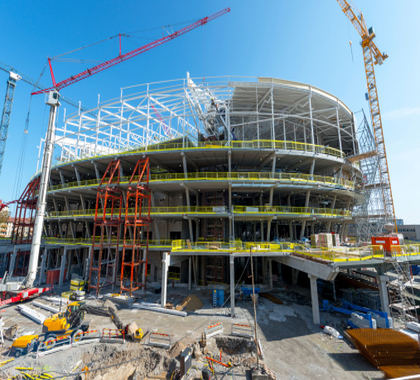Problem
Taxpayers are increasingly being forced to foot the bill for the construction of extravagant sports stadiums in cities throughout the nation. Professional sports owners, many of whom are billionaires, now rely less on private funding and more on taxpayer subsidies to build and renovate billion-dollar stadiums that only a small percentage of the public can afford to attend.
Several factors account for the massive increase in taxpayer-subsidized stadiums. First, sports teams have become a strong source of civic pride for cities. Public officials often use their town’s strong sports culture as a marketing tool to attract businesses and tourism. Second, professional sports teams now wield greater leverage and often resort to heavy-handed tactics when negotiating with cities and states. This typically results in taxpayers carrying the burden to pay for costly stadiums.
Policy Brief
Despite the prestige professional sports teams bring to cities, publicly funded stadiums remain a bad deal for taxpayers—even though these projects are receiving more tax dollars today than ever before. The average cost to the public for a new facility has increased dramatically since 2000, according to Judith Grant Long, an urban planning expert at Harvard University. In the 1990s, the average tax subsidy given to stadium projects was $142 million, but by 2010, the average subsidy had risen to $241 million, a 70 percent increase.
The majority of research on the economic effects of stadium construction has found no link between the new facilities and job or income growth, Samuel Staley and Leonard Gilroy note in a Reason Public Policy Institute report. Stanford University economist Roger Noll is even more direct, telling The Economist he has never in modern history found an example of when construction of a football stadium has had a significant positive impact on a local economy.
Policy Solutions
One option for state lawmakers looking to hold back stadium subsidies is an interstate compact being considered in several states that explicitly prohibits the “use of taxpayer dollars for private professional sports stadiums and facilities.” A good example of a compact bill was introduced in Arizona. Under Arizona’s proposed compact, if similar legislation is passed and ratified by 24 other states, the appropriation of government money for “the construction, maintenance, promotion or operation of a professional sports stadium” would be prohibited. The bill specifically includes bans on “direct funding, tax credit, tax exemption, government bond, loan, loan guarantee or any other funding mechanism that comes from state or local government.”
Stadium subsidies are a poor use of taxpayer money. They rarely realize the benefits their supporters claim, and they often shift tax revenue away from more pressing needs. Cities and states seeking to improve their economic competitiveness shouldn’t rely on professional sports teams. Instead, they should reduce taxes and invest in more cost-effective improvements, such as new and improved infrastructure.
Legislation banning taxpayer-funded stadiums immediately would be the ideal policy solution, but joining the compact presents a clear message: Taxpayers should not be on the hook to fund the construction of privately held sports facilities. The subsidization of exorbitant sports stadiums—which primarily benefits wealthy team owners, who then reap all the profits—is crony capitalism at its worst.
Policy Message
Point 1: From 1986 to 2015, $17 billion in tax-exempt debt was used to finance stadium projects at a cost of $4 billion to taxpayers.
Point 2: According to Forbes, $9.3 billion has been spent nationally on stadiums without a taxpayer vote on the matter.
Point 3: According to a 2017 poll, 83 percent of the economists surveyed agreed that, “Providing state and local subsidies to build stadiums for professional sports teams is likely to cost the relevant taxpayers more than any local economic benefits that are generated.”
Point 4: Professional sports have very little economic impact. As an example, research from sports economist Michael Leeds suggests that if every professional sports team in Chicago would disappear, the economic impact on Chicago would be a fraction of 1 percent.
Point 5: Tax subsidies may be even higher than reported, as economists underestimate costs associated with stadium projects, such as infrastructure upgrades, capital improvements, municipal services like police security, and lost property taxes.




